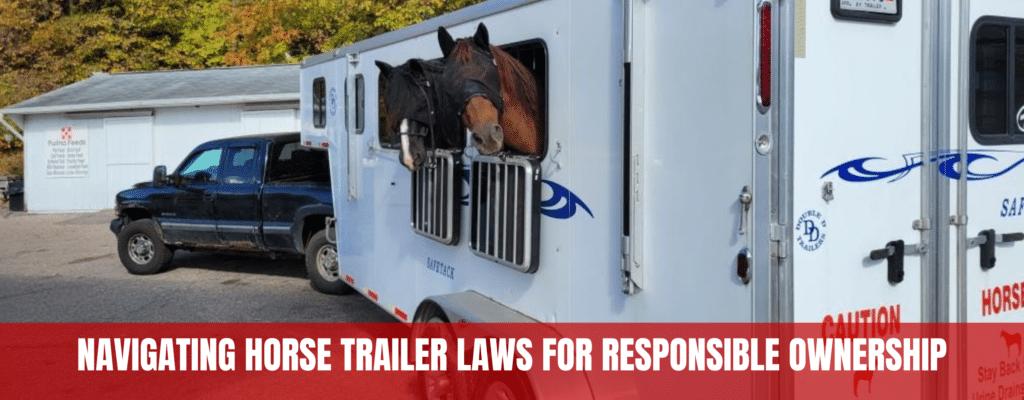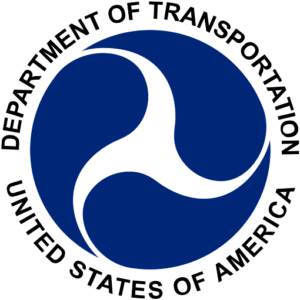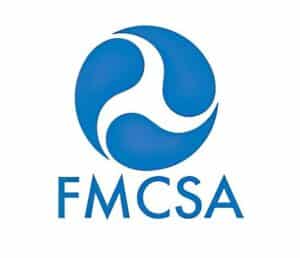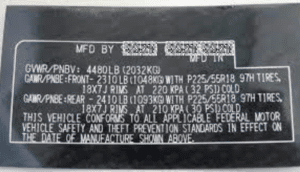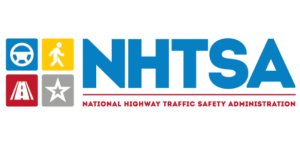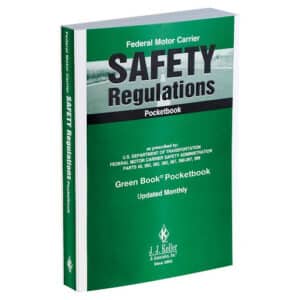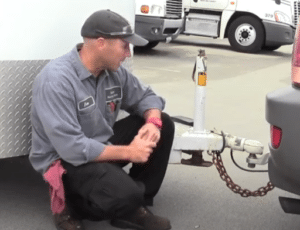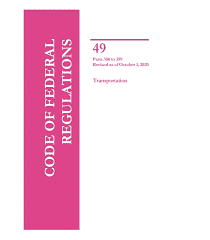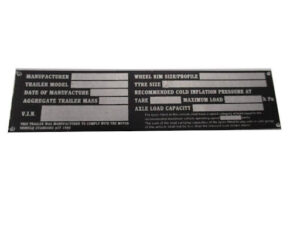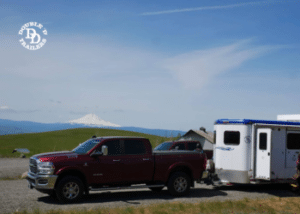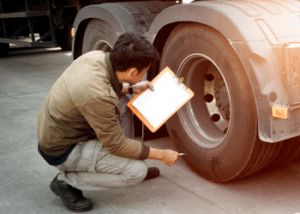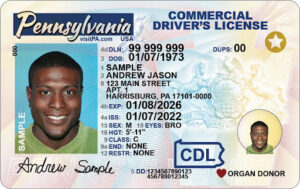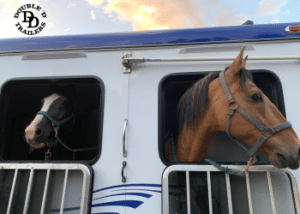Navigating Horse Trailer Laws for Responsible Ownership
Horse trailer laws and federal safety regulations are requirements and advisories that manufacturers and owners must comply with - they define the authoritative standards for manufacturing, selling, and operating horse trailers in the U.S. Did you know that staying compliant not only exemplifies responsible ownership but also ensures the safety of your horses? Grasping these guidelines is paramount for horse owners, transporters, and professionals in the industry.
Of course, manufacturers play a pivotal role in this ecosystem. They are tasked with aligning their production goals and processes to adhere stringently to these regulations, which subsequently dictates the quality and legality of the trailers they produce.
It all starts with a few of the U.S. Department of Transportation’s subsidiaries: the Federal Motor Carrier Safety Administration (FMCSA) and the Federal Motor Carrier Safety Regulations (FMCSRs) it has designed, alongside the National Highway Traffic Safety Administration (NHTSA)’s Federal Motor Vehicle Safety Standards (FMVSS), and other regulatory bodies and rule sheets. Dive in to discover the latest legal requirements that could impact you and your trailer.
U.S. Regulatory Bodies Related to Horse Trailers, Road Safety, and Equine Welfare
Zooming into the operational aspects, the Department of Transportation (DOT) stands as the principal regulatory body that oversees vehicle operations and manufacturing processes. There are several DOT certifications that individuals and businesses should possess to indulge in whatever activity they want to engage in legally. DOT certifications result from thorough examinations of the skills and qualifications related to the desired activity in need of permission, therefore, understanding the requirements is a must.
DOT’s Federal Motor Carrier Safety Administration (FMCSA) has set a strict set of rules known as FMCSRs (Federal Motor Carrier Safety Regulations). They are valid for all commercial means of transportation, with a few exceptions. One of them is the non-commercial transportation of horses, meaning that there should be no compensation for such services or relations to horse transportation businesses. If you transport your horses using your own horse trailer, you will likely not fall under the FMCSRs.
This FMCSR exception comprises several requirements, such as having ELDs (Electronic Logging Devices) and CDLs (Commercial Driver’s Licenses) that are typically required. However, some jurisdictions and horse trailers may require drivers to acquire a CDL.
The Federal Motor Vehicle Safety Standards (FMVSS) determine the basic fabrication and performance requirements horse trailer makers (and all other vehicle manufacturers) need to meet and preferably exceed in their line of work. FMVSS includes fabrication processes, materials, product design, safety features, and more.
DOT
The U.S. Department of Transportation (DOT) plays a pivotal role in guiding America's transportation sector. Operating under the purview of the Secretary of Transportation, the DOT's primary mission encompasses overseeing the nation's transportation infrastructure to guarantee safety, efficiency, and sustainability. DOT achieves all that through a variety of regulations and requirements and through its agencies, some of which are the Federal Highway Administration (FHWA), the Federal Motor Carrier Safety Administration (FMCSA), and the National Highway Traffic Safety Administration (NHTSA).
FMCSA
The Federal Motor Carrier Safety Administration (FMCSA) is among the most important DOT agencies because it’s in charge of the trucking industry nationwide. The agency’s strict regulations aim to reduce the number of road accidents caused by or involving trucks and buses and thus help prevent fatalities. The FMCSA has representatives in every state and has been operational since 2000.
FMCSR
The Federal Motor Carrier Safety Regulations (FMCSRs) are the most important arsenal of the FMCSA. These regulations outline the standards all individuals and entities should follow if they want to operate every non-exempt type of vehicle.
NHTSA
The National Highway Traffic Safety Administration (NHTSA) is another federal agency part of the DOT. The NHTSA handles all U.S. safety regulations regarding motor vehicles and equipment. The agency designed and implemented the Federal Motor Vehicle Safety Standards (FMVSS), alongside other sets of rules regarding the safety of imported vehicles and parts, vehicle manufacturer licenses, administration of the VIN (Vehicle Identification Number) register, and more. You can check if a horse trailer manufacturer complies with the NHTSA’s requirements by browsing its Manufacturers Information Database.
FMVSS
The Federal Motor Vehicle Safety Standards (FMVSS) regulate multiple aspects of U.S. vehicle manufacturing such as structural design, assembly, characteristics, durability, production sustainability, and mostly the safety standards all systems and components should comply with. The FMVSS are part of the Code of Federal Regulations’ Title 49.
USDA and Related State Agencies
Beyond the DOT, the U.S. Department of Agriculture (USDA) is another authority regulating part of the aspects related to horse transportation. The USDA is in charge of animal welfare during transportation, among other responsibilities. One of its rules related to horse transportation is the requirement for an individual Certificate of Veterinary Inspection for every horse. Most states require this document during interstate hauling.
Federal Requirements for Horse Trailer Manufacturers
Understanding all federal laws related to horse trailer manufacturing and operating is essential for every buyer. Even though a majority of the existing laws predominantly focus on the manufacturers, as a buyer, understanding these stipulations offers you the knowledge to discern if a trailer adheres to the necessary safety and other federal standards. This knowledge edge enables you to make informed decisions. Ensuring that you purchase a robust, compliant horse trailer from a trusted manufacturer sets the stage for responsible ownership. To help you with this, we’ll dedicate the following section to the regulations that serve this exact purpose.
1. U.S. Code of Federal Regulations (CFR) Title 49 Chapter 301: Motor Vehicle Safety
The Code of Federal Regulations (CFR) is a publication comprising all agency regulations, and it’s frequently updated through Federal Register amendments, which is the best way to stay informed on this matter.
As for Title 49’s Chapter 301, part of the U.S. Code, it’s one of the most important texts to consider. Introduced by the Secretary of Transportation, chapter 301 regulates the standards related to passenger safety in all motor vehicles. The chapter’s purpose is to introduce enough regulations, recommendations, and standards to result in fewer road accidents. We’ll outline the ones that will help you with the responsibility of owning and operating a horse trailer.
- 49 U.S. Code Section 30112
Manufacturing, Selling, and Importing Standards: This segment underscores the imperative of adherence to the prevailing vehicle safety standards for all vehicles and pertinent equipment being manufactured, sold, or imported in the U.S. Additionally, it necessitates the accompaniment of requisite certifications as outlined in subsequent U.S. Code sections.
- 49 U.S. Code Section 30115
Certification of Compliance: Detailing compliance mandates, this section elucidates the certification requirements for motor vehicles and associated equipment before they're dispatched. Typically, the presence of these certifications is signified through placards, decals, or labels, indicating their details.
- 49 U.S. Code Section 30116
Addressing Pre-sale Defects: In instances where defects or issues are identified by manufacturers or dealers, this provision dictates that the original seller either repurchases the vehicle at the initial cost or bears the cost of rectifying the defect to ensure alignment with stipulated safety and quality benchmarks.
- 49 U.S. Code Section 30117
Data Maintenance and Transparency: This section empowers the Secretary of Transportation to requisition sales and buyer-related data from manufacturers. It also establishes the mandate for maintaining records of such data.
- 49 U.S. Code Section 30166
Inspections, Investigations, and Records: Focusing on motor vehicle mishaps resulting in damages, injuries, or fatalities, this segment grants authoritative bodies the prerogative to initiate investigations and enforce necessary measures. This entails a structured approach to evaluate the safety of vehicles embroiled in accidents, among other considerations.
2. Title 49 CFR Part 565 - Vehicle Identification Number (VIN) Requirements
Part 565 of the CFR Title 49 describes the organization and administration of the VIN (Vehicle Identification Number) system. It regulates the format and other requirements related to VIN number installation and assists for a simpler identification process and better accuracy.
A VIN consists of 17 characters that represent a code: each character stands for certain and specific information, such as production year and location, manufacturer, and more.
-
Section 565.15 - Type of Vehicle and Information Decipherable
Eight different classes exist according to the Gross Vehicle Weight Rating factor (GVWR). GVWR stands for the maximum weight of a fully loaded truck, including fluids, equipment, passengers, and load. Understanding this factor is key for responsible horse trailer ownership because it allows for a precise choice of towing vehicle and avoids potential issues.
-
49 CFR 565.26 - Manufacturer’s Requirement to Furnish NHTSA with VIN Deciphering Information
The NHTSA and SAE International (formerly known as the Society of Automotive Engineers – an organization developing engineering standards with a focus on automotive and aerospace industries) have worked together to unify manufacturer identifiers in the automotive niche. As a result, manufacturers must provide the NHTSA with the information needed for generating and deciphering VINs.
What is a World Manufacturer Identifier (WMI)?
The World Manufacturer Identifier (WMI) is a small portion of a vehicle's VIN and serves as an identification for the manufacturer. The first three VIN symbols are the WMI code, and its presence speaks of the quality and trustworthiness of the manufacturer and the vehicle's compliance with international standards.
Federal Requirements for Trailer Owners
As a horse trailer owner, you should know all active horse trailer hauling laws. They can be related to the maximum weight you could pull with your tow vehicle, the frequent inspections the trailer needs to pass, and the licenses, registration, and permits it might require.
The Federal Motor Carrier Safety Regulations (FMCSR) regulates the safety requirements related to operating a horse trailer, starting from the manufacturing process. This includes inspection confirmation, emergency standards and equipment, approval of parts and accessories, and more. Horse trailer owners should understand all legal requirements and restrictions if they want to use their rigs safely and trouble-free.
1. Registration Requirements
Depending on factors like the size, weight, and the location of the horse trailer, licensing and registration requirements may apply.
In most states, you need to register a trailer no later than 30 days after purchasing it to avoid a penalty. Since registration requirements and laws vary across different jurisdictions, it’s best to contact your local DMV department and share details about your trailer and intended use for it.
Generally, the registration process necessitates the following:
- Valid identification or company registration documents.
- The trailer's title of ownership.
- A certificate testifying that the trailer has cleared any mandatory technical inspections.
2. Inspection Requirements
Horse trailer owners should be aware of all federal inspection requirements related to the safety of their rigs. Understanding technical inspection laws is an important part of the responsible ownership of a horse trailer.
The U.S. Department of Transportation (DOT) requires a specific inspection that all horse trailer owners should know about. All DOT inspection guidelines are applicable for vehicles with a weight of 10,000+ pounds, including trailers.
DOT Inspection Requirements
The requirements of DOT inspection cover multiple aspects of the vehicle’s technical condition, and these can vary from the annual state inspection guidelines. You should ask your local DOT representative for a complete list of requirements and inspected components. They will give you up-to-date advice on the federal requirements related to technical conditions, monitoring, and safety.
What is a DOT inspection?
A DOT inspection is a technical condition inspection carried out by federal employees, such as state officers or DOT inspectors. Even if the vehicle has a safety rating from the manufacturer or another authority, it needs to receive approval from DOT as well.
Do I need to pass a DOT inspection for my horse trailer?
In some states, you need to pass a DOT inspection if your horse trailer is not intended for personal use only and weighs over 10,000 pounds. Trailers weighing less may not be subject to a DOT inspection, depending on local legislation.
How often does a DOT inspection take place?
Any vehicle required to pass a DOT inspection must go through the process at least once a year, often more frequently. This depends on the type of vehicle. Sometimes, frequent roadside inspections are possible; therefore, keeping your trailer in sound mechanical order is a must.
Do different states have different inspection requirements?
The DOT inspection requirements across all states are similar, but variations almost always apply in most jurisdictions. Additionally, this inspection differs from the typical annual state inspections. The latter can vary as well, depending on the local legislation that may impose different requirements for vehicles and owners.
DOT Trailer Inspection Requirements Checklist
The DOT inspection concerns several specific items, shaping a checklist your trailer or other vehicle must comply with, as follows:
- Braking System: Comprehensive assessment of the braking system, emergency brake functionalities, and related connections.
- Coupling Mechanisms: Evaluation of the hitch and its coupling systems.
- Structural Components: Inspection of doors, latches, and the roof.
- Running Gear Components: Examination of wheels, tires, springs, and other associated components.
- Electrical System: Thorough check of lights and the overall electrical system.
3. Driver Licensing Requirements
Navigating the intricacies of driver licensing is crucial for all horse trailer owners. Depending on the weight of the combined tow vehicle and horse trailer, there are specific requirements regarding the type of driver's license one should possess.
- Licensing for Lightweight Combos:
For those driving a combination of vehicles weighing less than 10,001 pounds (either GVWR or GCVWR), a Commercial Driver’s License (CDL) is not required. Adherence to safety equipment guidelines and local state legislation is, however, mandatory. - Mid-weight Combination Requirements:
For combinations weighing between 10,001 and 26,000 pounds GVWR, no CDL is mandatory when traveling within the state. For interstate travel, it is recommended to abide by the Federal Motor Carrier Safety Regulations (FMCSRs), even though it's not obligatory. - Heavyweight Combos and CDLs:
Operating a vehicle or combination of vehicles with a GVWR exceeding 26,000 pounds mandates possessing a CDL and full compliance with the FMCSRs. Exceptions apply for intrastate travels within jurisdictions that do not insist on a CDL.
What is a CDL?
A Commercial Driver’s License (CDL) allows a driver to operate heavy commercial motor vehicles (CMVs) legally across the U.S. Holding a CDL is sometimes required for towing a horse trailer, even if it’s not intended for commercial use.
Who needs a CDL?
A driver needs to obtain a CDL if they need to haul vehicles or combinations of vehicles with a weight of 26,001 pounds or more. This applies to all types of motor vehicles, trailers, and related equipment.
Do I need a CDL to pull a gooseneck horse trailer?
Typically, gooseneck horse trailers do not require drivers to have a CDL, but you may need such a license if the trailer is used for commercial purposes or surpasses the 26,001-pound mark.
How much weight can a non-CDL driver haul?
Drivers who don’t possess a CDL are only allowed to operate vehicles or combinations of vehicles with a GVWR of up to 26,000 pounds. There are some exceptions to this rule, but they depend on individual state regulations.
4. Legal Load Limits
All vehicles compliant with federal laws and regulations are certified for manufacturing and sale based on several factors, including weight and load capacity. Every vehicle has placards or decals stating its gross weight, tongue weight, and maximum carrying capacity, all of which are illegal to interfere with. We’ll take a look at some of the popular weight rating factors you need to comply with to stay road-legal and avoid accidents, which is an important aspect of responsible horse trailer ownership.
>> READ BEFORE IT'S TOO LATE: Our Insights on a Lawsuit Over an Overweight Horse Trailer!
What is a GVWR?
The Gross Vehicle Weight Rating stands for the maximum allowed weight of your vehicle when fully equipped and loaded with fluids, accessories, cargo, passengers, and tongue weight.
What is a GCVWR?
The Gross Combined Vehicle Weight Rating adds the weight of the trailer to the GVWR, thus resulting in the maximum allowed weight of the combination of vehicles when fully loaded. This rating includes the allowed weight of horses as well.
What is a GAWR?
The Gross Axle Weight Rating refers to the maximum calculated weight either of the vehicle’s axles could handle. Typically, the front and rear axles of the same vehicle or trailer are rated differently.
How do federal motor carrier safety regulations apply to horse trailers?
The FMCSA has allowed an FMCSR exception for non-commercial horse transportation, meaning that FMCSRs don’t apply to those who transport horses without any compensation or commercial gain. Other exceptions include the lack of requirements for CDLs and ELDs (Electronic Logging Devices), but the latter could still be required for vehicle combinations with a GCW, GCWR, or GVWR of at least 26,001 pounds.
Do I need to stop my horse trailer at a weigh station?
No, you’re not required to do so unless DOT representatives or state troopers decide to perform a routine check. Still, pulling in a weigh station can give you peace of mind that you’re not exceeding any weight limits and that your tow vehicle and trailer composition is safe.
Do I need an ELD? Who is exempt from FMCSR?
Having an ELD is required for all commercial drivers who operate CMVs. To be legal, an ELD must be certified and properly registered with the FMCSA. The ELD requirement also requires drivers to keep different paperwork filed for possible checks. Non-commercial use of vehicles under the certain criteria explained above results in ELD exemptions.
5. Animal Welfare Requirements
One pinnacle of responsible horse trailer ownership is compliance with all animal welfare requirements. These are related to ensuring horses are safe and comfortable during transportation.
What is the Horse Transportation Safety Act?
The Horse Transportation Safety Act stands as a landmark amendment to Title 49 of the U.S. Code. Its primary provision is the prohibition of double-deck trailers for horse transportation. Historically, this type of transportation posed a grave danger to horses’ physical and mental health and exposed them to risks of injuries and fatalities. Trailers with two or more levels don’t allow horses to move freely and offered inhumane conditions, therefore, they were banned from using.
Interstate Travel Requirements Checklist
Part of the preparation before each departure involves not only loading supplies, tack, horse gear, and belongings but also a thorough check of the trailer, as follows.
- Technical Inspection:
- Hitch and Safety Chains: Ensure that they are robust, secure, and free of damage.
- Breakaway System: This should be fully functional, ensuring that the trailer can halt safely in emergencies.
- Lighting: All lights must be operational, including indicators and brake lights.
- Latches and Partitions: Examine for any signs of wear or damage, and ensure they function correctly.
- Wheels and More: Regularly inspect the wheel condition, ensuring that the tire pressure is optimal and that there's no damage to the rims or axles.
- Essential Equipment:
- Spare Tire and Hydraulic Jack: In case of a tire blowout, these tools can be crucial.
- Emergency Warning Triangle: Useful to alert other drivers in case of an unexpected halt.
- First Aid Kit: Preparedness for any minor injuries or emergencies is vital.
- Fire Extinguisher: Ensure it's loaded and easily accessible in the event of a fire.
How Do Horse Trailer Laws Impact Equine Welfare?
Horse trailer laws are designed to impact equine welfare in all ways, but mostly by ensuring the safety of horses during transportation, loading, and unloading. To achieve this goal, all federal laws and regulations outline strict requirements for horse trailer manufacturers, owners, and operators to follow.
The direct benefits include the following:
- Reduced road accidents involving horse trailers.
- Enhanced reliability and performance of horse trailers.
- Improved health conditions of horses during and post-transportation.
Does Federal Law Require Horse Trailer Insurance?
Federal law does not require separate horse trailer insurance. Most states’ regulations confirm that the tow vehicle’s insurance should cover the trailer to some extent, depending on the state. However, opting for a dedicated horse trailer insurance policy is recommended to ensure comprehensive protection against accidents, damages, or theft.
Meeting Legal Obligations: A Checklist for Horse Trailer Owners
For horse trailer owners, navigating the legal intricacies can sometimes be overwhelming. Here's a consolidated checklist to help ensure you meet all legal obligations:
- Weight Ratings: Ascertain the weight ratings of both the tow vehicle and the trailer. Ensure the combination doesn't breach allowed load capacities and tongue weights.
- CDL and ELD Requirements: Consult the Federal Motor Carrier Safety Administration (FMCSA) to determine if you require a Commercial Driver’s License (CDL) or an Electronic Logging Device (ELD).
- DOT Inspection: Ensure your horse trailer meets the stringent requirements of a Department of Transportation (DOT) inspection.
- Registration: Ascertain whether your trailer needs to be registered with your local Department of Motor Vehicles (DMV).
- License Validity: Ensure your driving license is up-to-date and valid for the specific combination of vehicles you intend to operate.
By diligently adhering to these guidelines, horse trailer owners can ensure not only the safety and well-being of their horses but also their compliance with all pertinent legal requirements.
Stay Informed, Compliant, and Prioritize Equine Welfare
Navigating horse trailer laws and regulations can be challenging. With so many regulatory bodies, from the DOT to the USDA, and a plethora of federal requirements, it's crucial for horse trailer owners to stay informed. But remember, these laws aren't just about ticking boxes; they play a pivotal role in safeguarding our equine friends during transit.
Throughout this guide, we've unpacked the legal intricacies surrounding horse trailers. We've explored the duties of manufacturers, the responsibilities of owners, and the profound impact of these laws on equine welfare. We've also touched on the relevance of horse trailer insurance and underscored the importance of fulfilling all legal obligations.
The handy checklist we provided earlier is designed to demystify the legal complexities for horse trailer owners. By following these guidelines and revisiting them periodically, you're not just ensuring your horse's safety; you're also showcasing responsible ownership.
In the world of horse trailers, being well-informed is your best asset. Stay updated, remain compliant, and always prioritize your horse's welfare.
Subscribe to the Double D Trailers Podcast Today!
